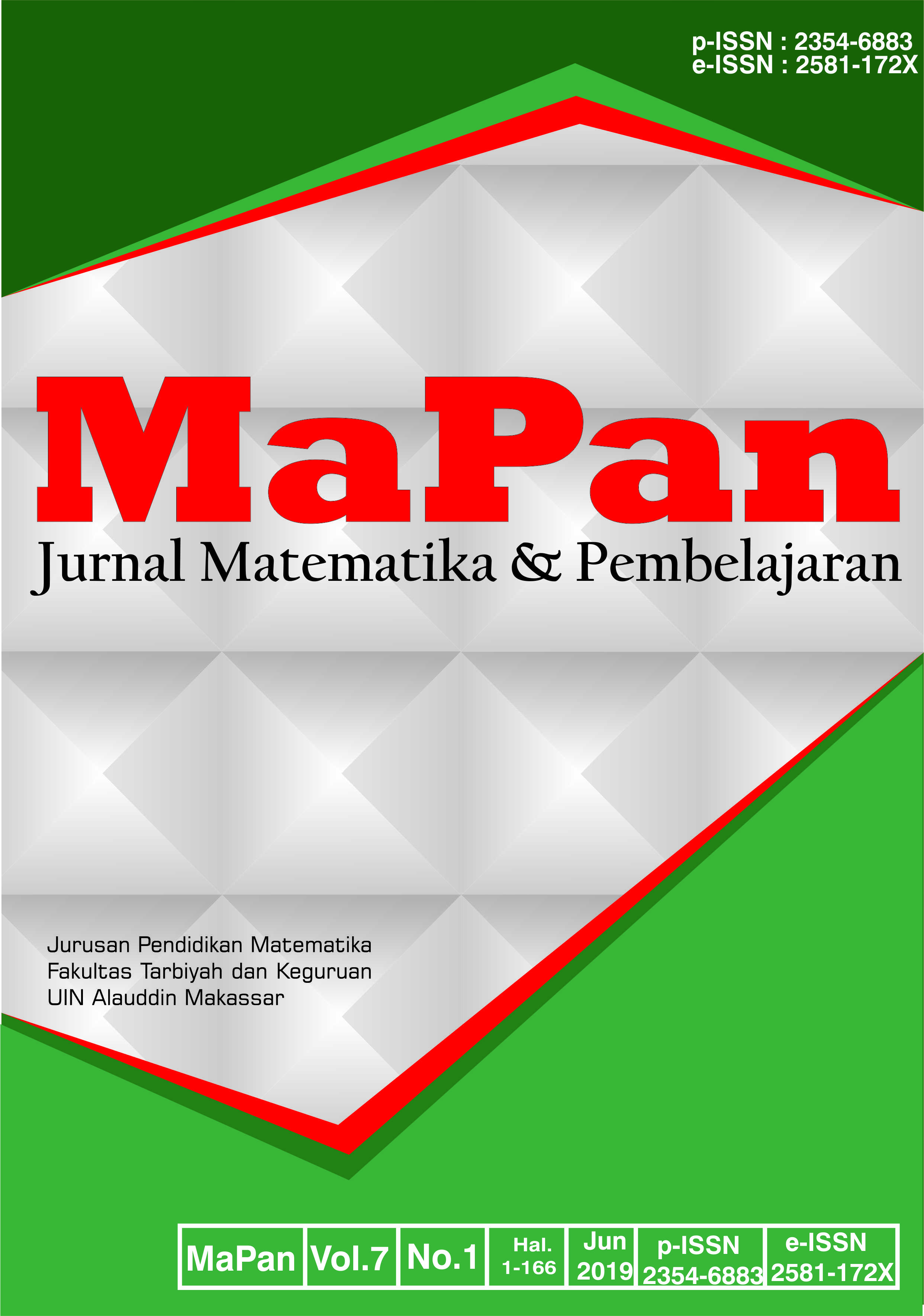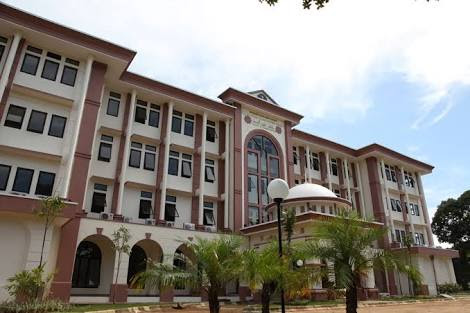MENGIDENTIFIKASI SIFAT-SIFAT BANGUN DATAR MELALUI “BERMAIN POLA” DAN EFEKTIVITASNYA TERHADAP KEMAMPUAN SPASIAL SISWA SEKOLAH DASAR
Abstract
Abstrak:
Penelitian ini bertujuan mengembangkan permainan “Bermain Pola” yang layak, dan mengetahui efektivitas permainan tersebut dalam meningkatkan kemampuan spasial. Permainan "Bermain pola" ini dikembangkan untuk melatih siswa sekolah dasar mengidentifikasi sifat-sifat bangun datar. Metode penelitian yang digunakan adalah penelitian dan pengembangan. Permainan yang dikembangkan harus layak ditinjau dari aspek pendefinisian, perancangan, bahasa, kesesuaian dengan indikator pembelajaran serta pemilihan gambar yang tepat. Uji coba terbatas dan luas dilakukan di SDK (Sekolah Dasar Katolik) Kumba 1 dilengkapi dengan aturan permainannya serta perangkat pembelajaran berupa RPP, LKS, tes kemampuan spasial, lembar observasi aktivitas siswa, lembar pengamatan kemampuan guru dalam mengelola pembelajaran, dan angket respons siswa terhadap permainan tersebut. Sedangkan media bantu pembelajaran yang diperlukan adalah pola-pola bangun datar, stopwatch dan peluit. Data kemampuan spasial pada penelitian ini dikumpulkan menggunakan tes uraian. Efektivitas permainan terhadap kemampuan spasial diuji dengan menggunakan one sample t-test, dengan menggunakan kriteria ketuntasan minimal sebesar 65. Hasil penelitian ini menghasilkan permainan “Bermain Pola” serta penggunaannya yang efektif terhadap kemampuan spasial siswa Sekolah Dasar.
Abstract:
This study aimed to developing a decent "Playing Pattern" game, and knowing the effectiveness of the game in improving spatial abilities. This "Play pattern" game was developed to train elementary school students to identify 2-dimensional build properties. The research method used was Research and Development (R & D). The game developed must be feasible in terms of defining aspects, design, language, conformity with learning indicators and the selection of appropriate images. Limited and extensive trials conducted at SDK (Catholic Primary School) Kumba 1 with the rules of the game as well as learning tools in the form of RPP, LKS, spatial ability tests, observation sheets of student activities, observation sheet teacher's ability to manage learning, and student response questionnaires to the game. Whereas the needed learning aid media were flat, stopwatch and whistle wake patterns. Data on spatial ability in this study were collected using description tests. The effectiveness of the game on spatial ability was tested using one sample t-test, using minimum completeness criteria of 65. The results of this study slowed that in the game "Playing Pattern" and its effective use of spatial abilities of elementary school students.
Downloads
References
Bayram, H. Y. (2009). On the development and measurment of spatial ability. Internasional Electronic Journal of Elementary Education, 9(1), 83–96. Retrieved from https://eric.ed.gov/?id=EJ1052049
Bell, F. H. (1981). Teaching and learning mathematics (in secondary schools). Iowa: Wm. C. Brown Company.
Derek, H. (2007). Teaching primary mathematics. London: Sage Publication.
Dickyandi, N. (2016). Metode mengajar ala Tiongkok dan Jepang. Yogyakarta: DIVA Press.
Husein, T. K. (2006). Permainan kreatif berbasis topik. Jakarta: Erlangga.
Kurniawan, Y., Jelatu, S., Adi, N. P., & Kurnila, V. S. (2018). An android-based application to improve the ability to draw and interpret fbd. 01(01), 172–187.
Kurnila, V. S. (2013). Kontribusi standar proses pada kurikulum 2013 guna meningkatkan kemampuan algoritmik siswa. Jurnal Pendidikan Dan Kebudayaan Missio, 10(1), 53–58.
Lyn, E. D. (2002). International research in mathematics education. London: Lawrence Erlbaurm Associates.
Nugroho Prasetya, A., & Yohanes, K. (2018). Meningkatkan higher order thinking skill dan sikap terbuka melalui media pembelajaran android. Journal of Komodo Science Education, 01(01), 79–94.
Peker, M. (2008). Pre-service elementary school teachers’ learning styles and attitudes towards mathematics. Eurasia Journal of Mathematics, Science & Technology Education, 4(1), 21–26.
Ramda, A. H., Kurnila, V. S., & Jundu, R. (2018). Implementasi kurikulum 2013 pada standar isi buku teks matematika kelas VIII. Jurnal Eksakta Pendidikan (Jep), 2(2), 162. https://doi.org/10.24036/jep/vol2-iss2/231
Seifert, K.L. & Hoffnung, R. J. (1987). Child and adolescent development. Boston: Houghton Mifflin Company.
Suwarma, D. M. (2009). Suatu alternatif pembelajaran kemampuan berpikir kritis matematika. Jakarta: Cakrawala Maha Karya.
Tosto, M. G., Hanscombe, K. B., Haworth, C. M. A., Davis, O. S. P., Petrill, S. A., Dale, P. S., … Kovas, Y. (2014). Why do spatial abilities predict mathematical performance? Maria. Developmental scince, 17(3), 462–170. https://doi.org/10.1053/j.jvca.2010.06.032
Wahyudin. (2015). Penelitian pendidikan matematika. Bandung: Refika Aditama.
Copyright (c) 2019 YOHANES KURNIAWAN, Valeria Suryani Kurnila, Apolonia Hendrice Ramda

This work is licensed under a Creative Commons Attribution 4.0 International License.


